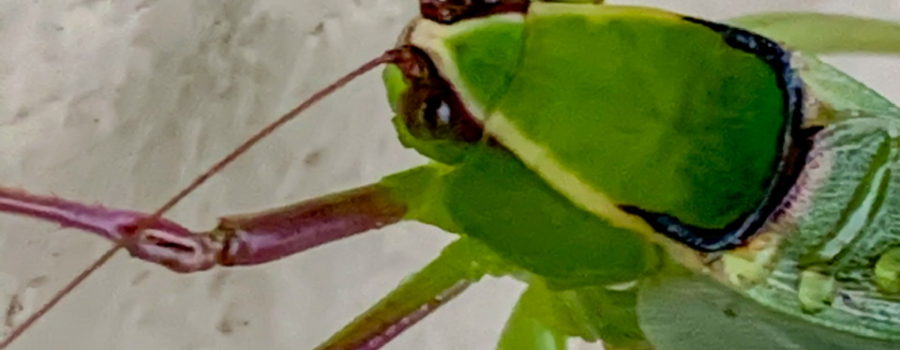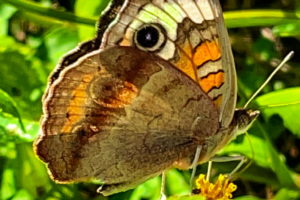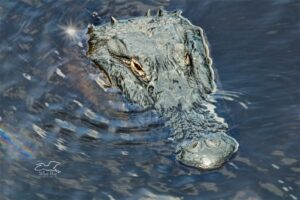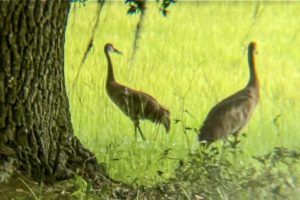The Beautiful Florida Giant Katydid Looks Like a Leaf

There seems to be something about the white concrete block walls of our dog kennel at work that attracts nocturnal insects to come there to rest during the day. Earlier I wrote about a Polyphemus moth that came there to rest. A few days later, when I came in early in the morning, I spotted a large, green Florida giant katydid on a different part of the wall. It too seemed to be resting, and it spent the day there, but was gone by the next morning. When I spotted the katydid, I of course, had to take some photos. About the time I started a couple of my coworkers showed up, and they were curious about it, too (I’ll turn them into amateur naturalists yet!). We enjoyed getting to see it, because even though they are fairly common in this area, you don’t see them that often because they are so well disguised.

Even though katydids can be found almost everywhere in the world except the Arctic and Antarctic, the Florida giant katydid is found only in peninsular Florida and Cuba. In it’s adult form, it is the largest species of katydid in the world. To reach that large size it grows very rapidly. The first instar nymph that hatches from the egg is less than 1/4 inch long and within 60 to 70 days it has reached it’s full size of 1 1/2 to 2 inches long. That is pretty remarkable on it’s own, but it is exceptional in that the giant katydid is completely vegetarian. They eat only grasses and leaves, mainly those from deciduous trees like oaks (which we have lots of in this area), hypericum, bramble, and roses. Luckily they like to nibble leaf edges and rarely cause significant damage, to either the plant or the ecosystem.

Being leaf eaters, it’s not surprising that katydids are generally camouflaged to look like leaves, and the Florida giant katydid is no exception. You can see from the photos that hidden in a tree, this insect, though large, would be difficult to see. The wings are even veined to look like leaves! Even though giant katydids have wings and are quite capable of flight, they usually only fly when startled or threatened. Most of the time their preferred method of movement is by using their long, powerful hind legs (they are closely related to grasshoppers) to jump extending their wings to glide further distances if necessary. Giant katydids spend most of their time in the trees that they feed on, and rarely come down onto the ground, so jumping and gliding can get them around very effectively. It should be noted that nymphs don’t have wings, so they depend solely on jumping to get around.

Some people like to keep giant katydids as pets, and they can become quite used to handling. They are fairly easy to keep as long as the proper temperature and humidity can be maintained. Handling should be done gently and carefully, though since giant katydids can bite. They have plier like jaws (perfect for biting off pieces of leaves) that can produce a pinching bite. They are not toxic, but the bite can be painful, especially to children. And of course, children (and adults) shouldn’t be encouraged to try to handle wild giant katydids. So, if you’re lucky enough to run across one when out and about in Florida, enjoy viewing it, but leave it alone (a good rule of thumb for interacting with all wildlife). Do you have any types of giant insects in your area?





Recent Comments